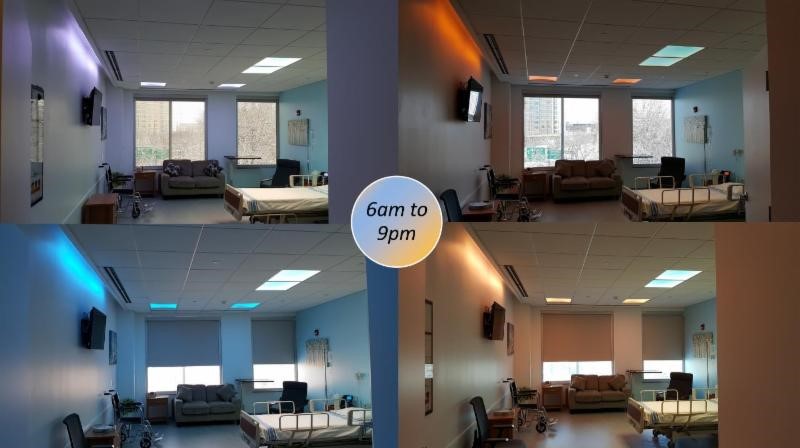Among the changes taking place in healthcare is a trend in hospitals toward designing larger, single-patient suites that consist of a bedroom and bathroom, rather than the traditional shared rooms.
A recently completed DOE-funded R&D project carried out by Philips Lighting Research North America sought to redefine lighting for healthcare patient suites by developing an innovative LED lighting system that not only was 40% more energy-efficient than traditional fluorescent incumbent technologies, but also met all of the visual and non-visual needs of patients, caregivers, and visitors while improving the overall patient experience.
The system of more than 10 luminaires was comprised of state-of-the-art multichannel LED platforms and Power over Ethernet drivers, along with control technologies that provided spectral tuning and became part of an intelligent connected lighting system. Complex and nuanced software was written to set behaviors for a variety of lighting scenes in the patient suite throughout the course of a 24-hour day, including a dynamic tunable-white program, three color-changing automatic programs that simulated sunrise-to-sunset palettes, and an amber night-lighting system that offered visual cues for postural stability to minimize the risk of falls. All programs were designed to provide visual comfort for all occupants, enable critical task performance for staff, support patients’ circadian rhythms, and allow override via manual controls. In addition to spectral tuning, the system makes use of occupancy, daylight, and user controls, with intuitive user-control interfaces for patient, family, and caregivers.
Four independent color channels make it possible for the lighting system to produce a wide range of tunable-color and tunable-white combinations. When the system is operated in tunable-white mode, it provides CRIs ranging between 80 and 85, with CCTs that can be tuned from 2700K-6500K. The advanced controls enable the system to give patients and staff a very different lighting experience, not only adjusting the lighting intensity based on the availability of outside light from the windows when appropriate, but also adjusting the CCT of the luminaire located directly above the bed, and adjusting the color points of the luminaires located around the bed’s perimeter, over the course of the day. These CCTs change from warm in the morning to cool at midday and back to warm in the evening. When the bathroom lights are turned on the middle of the night, their output increases gradually in order to let the patient’s eyes adjust. With all of this functionality combined into a complete solution, the lighting system uses 40% less energy compared to incumbent fluorescent systems.
At a full-scale mockup at Philips’ lab in Cambridge, MA, the lighting system was found to meet visual criteria (confirmed by calculations, simulations, and in situ measurements) as well as non-visual criteria (confirmed by in situ measurements of spectral power distribution and illuminance, and calculations of circadian stimulus levels). Additionally, human-factor evaluations were conducted with eight healthcare professionals, who represented a range of job functions. The overall response to the lighting system was positive, with requests to pilot it at multiple healthcare facilities in recognition of its energy efficiency and value to patient and staff well-being, and unanimous agreement that a tunable lighting system is desirable in a patient room



